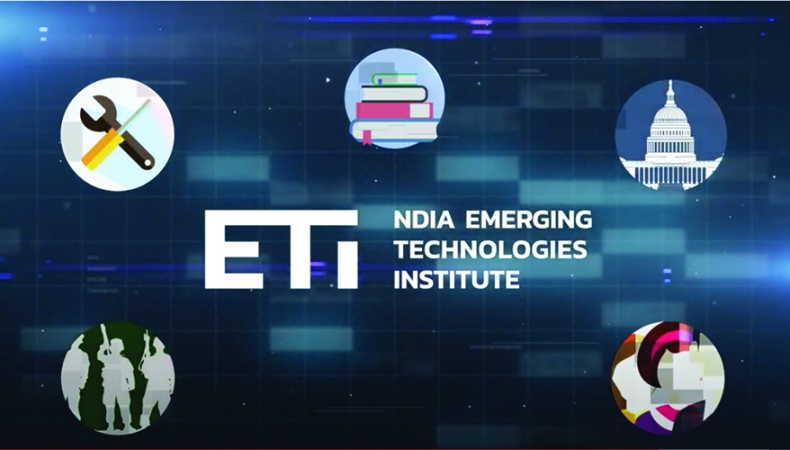January 31, 2020
By: Jill Aitoro
SIMI VALLEY, Calif. — Private investors are not yet lining up to back defense startups, but they are paying close attention.
Two factors have created an opening that could lure venture capitalists to defense investments: first, a few select venture-backed technology startups are gaining traction; and second, there's been a strategic shift in approach to weapons development from the U.S. Department of Defense, focusing more on information warfare and, as such, software.
In the words of Mike Madsen, director of strategic engagement at the Pentagon's commercial tech hub, Defense Innovation Unit: "We're at a significant inflection point right now that will be visible through the lens of history.”
Nonetheless, for the tech startups, it's been slow going, as discussed during a Defense News roundtable in California. For the second year, leadership from DoD and the tech community came together to discuss the state of the Pentagon's efforts to attract commercial startups — this time digging into the challenges and opportunities that come with investment in defense development.
“We went into this eyes wide open, knowing full well that to the venture community, the math doesn't make sense. Making the choice to contribute to the advancement of artificial intelligence for DoD represented for us more of a mission-driven objective,” said Ryan Tseng, founder of artificial intelligence startup Shield AI.
But early on, “we were fortunate to get the backing of Andreessen Horowitz, a top-tier venture fund. They're certainly leaning in, in terms of their thinking about defense technology — believing that despite the history, there might be a way to find an opening to create companies that can become economically sustainable and make substantial mission impact.” Shield AI has raised $50 million in venture funding since 2015, with more rounds expected.
Indeed, a few key Silicon Valley investors have emerged as the exceptions to the rule, putting dollars toward defense startups. In addition to Andreessen Horowitz, which counts both Shield AI and defense tech darling Anduril in its portfolio, there's General Catalyst, which also invested in Anduril, as well as AI startup Vannevar Labs.
And then of course there's Founders Fund. Led by famed Silicon investors Peter Thiel, Ken Howery and Brian Singerman, among others, the venture firm was an early investor in Anduril, as well as mobile mesh networking platform goTenna. Founders Fund placed big bets on Palantir Technologies and SpaceX in the early days, which paid off in a big way.
Some of the early successes of these startups have “done an excellent job of making investors greedy,” said Katherine Boyle, an investor with General Catalyst. “There's a growing group who are interested in this sector right now, and they've looked at the success of these companies and [are] saying: ‘OK, let's learn about it.' ”
Take Anduril: The defense tech startup — co-founded by Oculus founder Palmer Luckey and Founders Fund partner Trae Stephens — has raised more than $200 million and hit so-called unicorn status in 2019, reaching a valuation of more than $1 billion. As the successes piled up, so did the venture capital funding. According to Fortune magazine, those investors included Founders Fund, 8VC, General Catalyst, XYZ Ventures, Spark Capital, Rise of the Rest, Andreessen Horowitz, and SV Angel.
“I started my career at Allen & Company investment banking. Herbert Allen, who's in his 80s, always said: ‘Hey, you should run into an industry where people are running away,' ” said John Tenet, a partner with 8VC as well as a co-founder and vice chairman of defense startup Epirus.
“There's so much innovation occurring, where the government can be the best and biggest customer. And there are people who really want to solve hard problems. It's just figuring out where the synergies lie, what the ‘one plus one equals three' scenario will be.”
Also attracting the attention of Silicon Valley investors is the growing emphasis by the Pentagon not only on systems over platforms, but software over hardware. Boyle described the shift as the “macro tailwind” that often drives innovation in a sector. Similar revolutions happened in industrials and automotive markets — both of which are also massive, global and slow-moving.
That emphasis on tech, combined with some recent hard lessons, also provides a glimmer of hope that the typical hurdles associated with defense investments — lengthy procurement cycles and dominance by traditional manufacturers, for example — could be overcome.
Consider U.S. Code 2377, which requires that commercially available items be considered first in procurement efforts, said Anduril's Stephens. He also noted court decisions in lawsuits filed by SpaceX and Palantir, which ultimately validated claims that defense agencies had not properly ensured a level playing field for major competitions.
“These types of things are now at least in recent memory for Congress, and so they have some awareness of the issues that are being faced,” Stephens said. “It's much easier now to walk into a congressional office and say, ‘Here's the problem that we're facing' or ‘Here's the policy changes that we would need.' There are also enough bodies like DIU, like In-Q-Tel, like AFWERX, like the Defense Innovation Board, like the [Defense Science Board] — places where you can go to express the need for change. And oftentimes you do see that language coming into the [National Defense Authorization Act]. It's part of a longer-term cultural battle for sure.”
For now, all these factors contribute to the majority of skeptical investors' decisions to watch the investments with interest — even if they still take a wait-and-see approach. And that places a lot of pressure on the companies that are, in a sense, the proof of concept for a new portfolio segment.
“My fear is that if this generation of companies doesn't figure [it] out, if they don't knock down the doors and if there aren't a few successes, we're going to have 20, 30 years of just no investor looking around the table and saying we need to work for the Department of Defense,” Boyle said. “If there aren't some success stories coming out of this generation of companies, it's going to be very hard to look our partners in the eye and say: ‘We should keep investing in defense because look at how well things have turned out.'”
https://www.defensenews.com/smr/cultural-clash/2020/01/30/as-tech-startups-catch-dods-eye-big-investors-are-watching/



